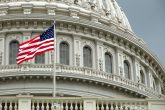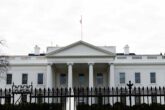June 03, 2022
Western Hemisphere Migration is a Long-Term Challenge
Next week, the Biden administration hosts the ninth Summit of the Americas, a gathering of leaders from the 35 countries that form the core of the Organization for American States (OAS). The Summit takes place once every four years. In addition to addressing long-standing issues such as trade, combatting corruption, and upholding democratic governance, the United States has added addressing root causes of irregular migration to the agenda. This year will be the first time attendees will tackle this issue since President Bill Clinton convened the first summit in 1994. The region cannot afford to wait until 2026 to meaningfully discuss this issue again at a high-level convening.
Addressing western hemisphere migration should be a national and international priority. Capacity of these migration flows to rapidly change in scale and scope demands that the United States, the rest of the countries in the region, and international organizations such as the International Organisation for Migration (IOM), establish regular, hemispheric-wide meetings to develop polices and manage these flows in a coordinated way.
Addressing western hemisphere migration should be a national and international priority.
Large-scale migration events have been a core facet of life across the hemisphere in the latter half of the 20th century. Factors such as insufficient economic opportunities, cartel violence and civil wars in Central and South America prompted people to leave their countries in search of better opportunities and safety in other countries. Central American and Caribbean migrants, most prominently Cuban and Haitian, have all taken land and sea routes to reach the United States. In South America, families and individuals have fled dictatorships and civil wars to neighboring countries, with some, such as Colombians, traveling to the United States to seek safety.
Read the full article from Just Security.
More from CNAS
-
Sharper: National Security in a Divided Congress
Following the 2022 midterm elections, a new U.S. Congress was sworn in, resulting in a divided House and Senate with narrow margins. Key national security legislative items ar...
By Anna Pederson & Cameron Edinburgh
-
Schedule F: An Unwelcome Resurgence
The U.S. government is able to take on high-risk, high-cost ventures—nuclear security, pandemic response, environmental clean-up, food safety, and more—because civil servants ...
By Loren DeJonge Schulman
-
The Lawfare Podcast: Klein and Cordero on the Latest FISA Numbers
To discuss the latest in FISA transparency news, the data and what it all means, Benjamin Wittes sat down on Lawfare Live with Carrie Cordero of the Center for a New American ...
By Carrie Cordero
-
Opportunity to Reform the Department of Homeland Security’s Biodefense Operations and Governance
If Russia were to engage in biological warfare against Ukraine, that act could embolden other countries to develop and use such weapons in other conflicts....
By Carrie Cordero & Asha M. George




